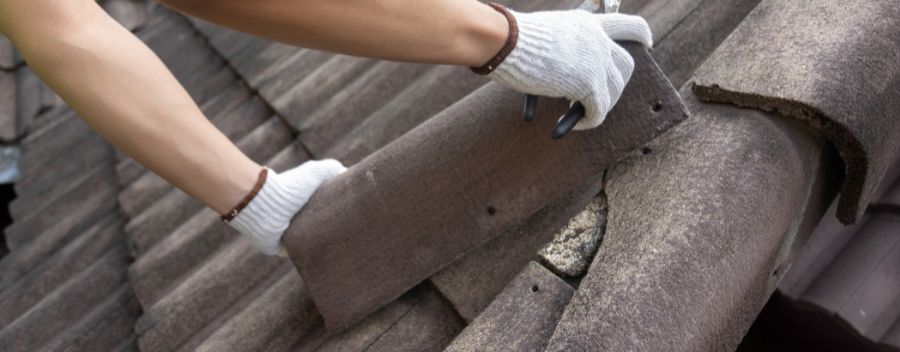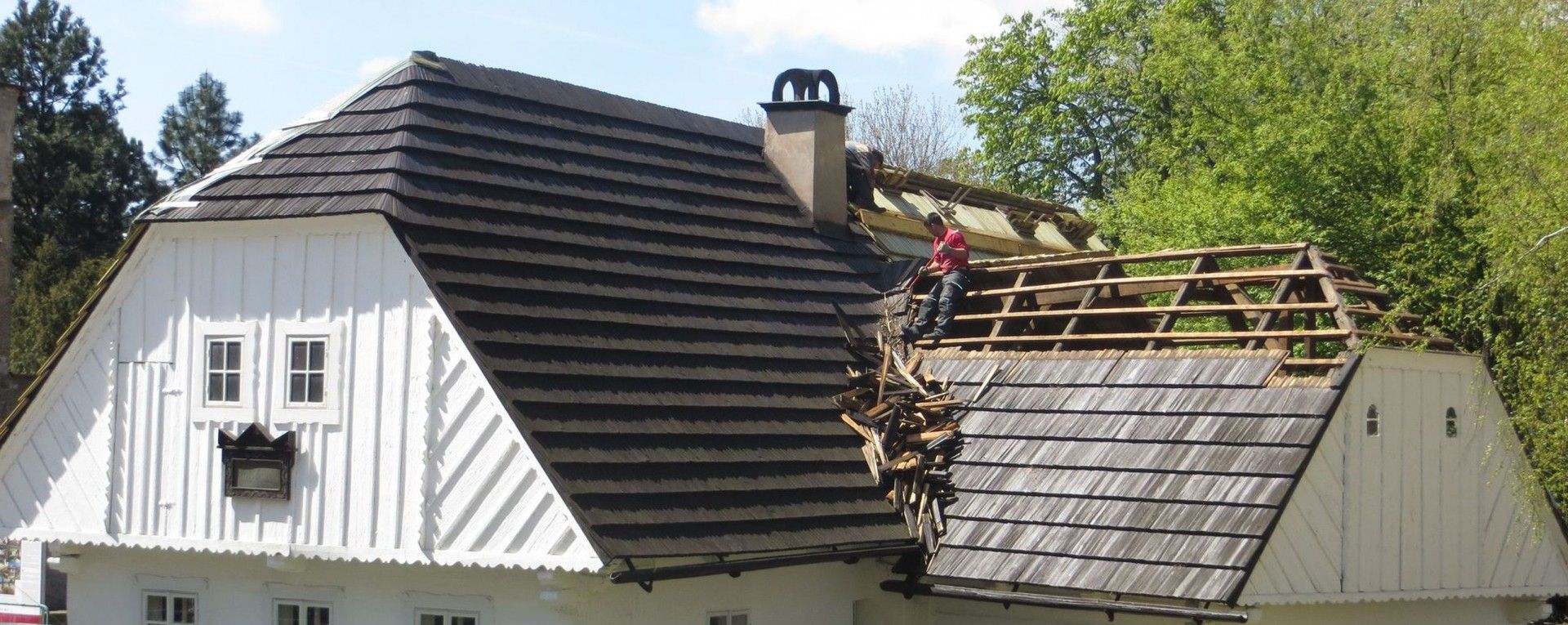What Is the Average Cost of a Roof Installation in Cape Coral, FL?
Homeowners and business owners in Cape Coral, FL who are planning a roof installation can expect to spend an average of $8,000. However, depending on the project’s specifics, costs can range from as low as $4,000 to as high as $14,000. For larger or more luxurious roofing projects, costs may rise to $47,000 or more.
The final price of a roof installation in Cape Coral is determined by multiple factors, including the type of roofing materials, the size and complexity of the roof, and local labor rates. It’s essential to understand these variables to budget effectively and avoid unexpected expenses during your project.
Let’s look at what determines roof installation costs, the materials available, and how to choose the best contractor in Cape Coral.
What Influences Roof Installation Costs?
Several factors can considerably affect the overall cost of roof installation in Cape Coral. Here are the most important considerations:
1. Type of Roofing Material
Asphalt Shingles: The most affordable choice, costing between $5 and $8 per square foot for materials and installation. Asphalt shingles last between 20 and 30 years, making them a popular choice.
Metal Roofing: Durable and energy-efficient, metal roofs cost $7 to $11 per square foot. While the upfront cost is higher, they can last 40 to 70 years and require less maintenance.
Tile Roofing: Common in Florida’s Mediterranean-style homes, tile roofing costs range from $10 to $20 per square foot, depending on the material. Tile roofs can last over 50 years but may require structural reinforcement.
Wood Shakes and Shingles: These natural materials cost $10 to $12 per square foot. While they add rustic charm, they require more maintenance and may not last as long in humid climates.
Solar Shingles: Innovative but expensive, solar shingles start at $25 per square foot. They combine energy efficiency with roofing but come with a high upfront cost.
2. Roof Size and Complexity
A larger roof requires more materials and labor, driving up costs. Furthermore, roofs with steep pitches, several levels, or complex designs require more time and skill to build, raising labor costs.
3. Labor Costs
Labor rates in Cape Coral typically range between $45 and $75 per hour, depending on the contractor’s expertise and reputation. While it may be tempting to choose the cheapest option, quality workmanship is crucial for a long-lasting roof.
4. Removal of Old Roofing Materials
If your currently installed roof needs to be removed, it can increase the overall cost. The technique used is determined by the materials being removed as well as the number of layers. Certain types of roofing allow new materials to be put over existing ones, saving on removal costs.
5. Additional Features
To maximize the functionality of your roof, features like ventilation systems, insulation, and gutters are essential. For instance, replacing attic insulation can increase energy efficiency, whereas seamless gutters cost between $8 and $28 per linear foot.
6. Permits and Inspections
Cape Coral residents will need to account for permits and inspections, which typically cost $50 to $200. Ensure you check with the local building department for specific requirements.
Seasonal Considerations for Roof Installation in Cape Coral
When planning roofing projects in Florida, the weather is an important factor to consider. Roof installation is best done in the spring and early fall, when the weather is milder and there are fewer rainstorms.
Avoid scheduling your project during hurricane season, which runs from June to November, as unpredictable weather can cause delays and safety concerns. While winter offers cooler temperatures, rain can still be a factor. Booking during off-peak seasons, such as late fall, may also help you save on labor costs.
Off-Peak vs. Peak Season Pricing
Roofing services are in high demand during late spring and summer, leading to higher prices. If possible, schedule your project during off-peak times. Contractors may offer discounts or reduced rates during these slower periods, and you’re more likely to receive personalized service.
How to Choose the Right Roofing Contractor in Cape Coral
Selecting a reliable contractor is critical for a successful roofing project. Follow these steps to find the best option:
- Verify Licenses and Insurance: Ensure the contractor is licensed to work in Florida and carries liability insurance and workers’ compensation coverage. This protects you in case of accidents.
- Check References and Reviews: Ask for references and follow up with past clients to assess the contractor’s work quality and professionalism. Online reviews on platforms like Google or Yelp can also provide valuable insights.
- Request Written Estimates: Obtain detailed estimates from multiple contractors. Make sure the estimates outline materials, labor costs, and any additional fees to avoid surprises.
- Evaluate Warranty Options: Reputable contractors offer warranties for their work. Ask about the length and coverage of their warranty to protect yourself in the long term.
Red Flags to Avoid:
- Contractors who pressure you into quick decisions
- Requests for full payment upfront
- Lack of transparent upfront pricing
- Unprofessional communication
Why a Quality Roof Is Worth the Investment
A well-installed roof protects your home from Cape Coral’s heavy rain, strong winds, and intense sunlight. Quality roofing materials also improve energy efficiency, reducing cooling costs during Florida’s hot summers. While the initial investment may seem significant, a durable roof can last decades, saving you money on repairs and replacements in the long run.
Final Thoughts
Installing a new roof in Cape Coral, FL is a significant investment that requires careful planning and budgeting. Costs can vary widely based on materials, labor, and additional features, so it’s important to do your research and choose a contractor you trust. By understanding the factors that influence roof installation costs and timing your project strategically, you can ensure a smooth, cost-effective process.
For professional, reliable roof installation in Cape Coral, reach out to Boss Roofing – Siding Experts, the local experts who can provide detailed estimates and top-quality service. Investing in a quality roof not only enhances your property’s value but also ensures long-term peace of mind.
FAQ
How often should I inspect my roof in Cape Coral, FL?
It’s recommended to inspect your roof at least twice a year, preferably in the spring and fall, and after severe storms to catch any potential damage early.
What’s the lifespan of a typical roof in Cape Coral?
The lifespan varies by material. Asphalt shingles last 20–30 years, metal roofs 40–70 years, and tile roofs over 50 years with proper maintenance.
Are metal roofs a good option for hurricane-prone areas?
Yes, metal roofs are highly durable and can withstand strong winds, making them a great choice for hurricane-prone regions like Cape Coral.
What are the signs that my roof needs replacement?
Look for missing shingles, sagging, water leaks, or visible damage. If your roof is nearing the end of its lifespan, consider scheduling an inspection with a professional.





